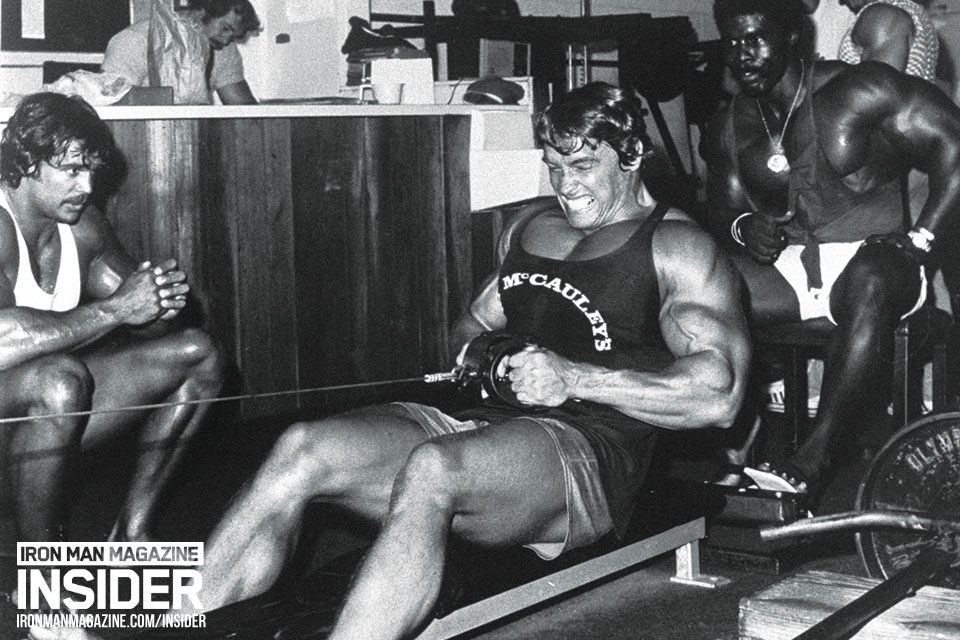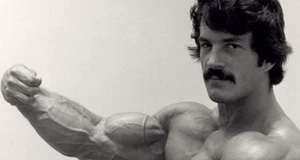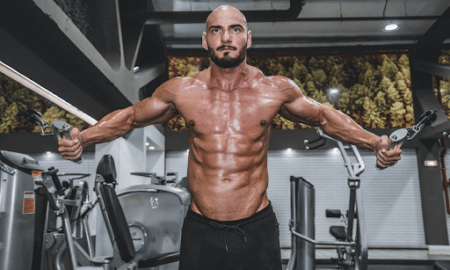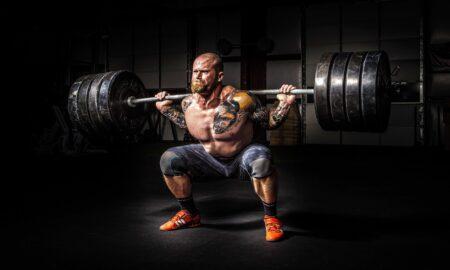

The average readers of bodybuilding magazines are not pros, yet the routines presented to them, which they, theoretically, are supposed to model their own training after, are indeed those of the pros. Many logically wonder whether they should be training as much as the pros—or maybe more. These are the respective rationales:
1) Less work. “Normal” lifters—meaning non-steroid, noncompeting trainees—should be doing a lot less volume and intensity than the pros. Due to their genetics and drug use, the pros can handle a lot more volume and abuse to their bodies without overtraining and injury. Natural folks can’t handle that much work without getting injured or overtrained, so they should be doing a lot less.
2) More work. Normal people should be doing more volume and more work than pro bodybuilders. Pros are genetically gifted and taking lots of drugs, so they can do very little and still see huge gains. As a “normal” lifter you need to do more and work harder than pros to see great results.
These points are debated all the time, and with good reason, as there are so many related factors beyond the ones already mentioned. “How much should I be doing?” is a question I get on a daily basis. People want exact prescriptions and numbers, as in how many sets for each bodypart. We can lay out general guidelines, of course, but they won’t be optimal for everyone. Because so many guys over the years and even today have modeled their own workouts on the pro-training articles, let’s get right into whether average trainees, not using performance-enhancing drugs and not making a living from their physiques, should be doing “high volume.” First of all, that’s a nebulous term that means different things to different people. For the sake of argument, let’s agree that there is a difference between shorter, abbreviated workouts that can be completed in roughly 40 minutes and far more involved workouts, as performed by most pros and top amateurs, that will take at least an hour to complete if not 90 minutes or more.
In my opinion, most people should not be training with as much volume as the pros, but intensity is another story. Intensity should always be high, except for specific periods when you back off after anywhere from six to eight weeks of high intensity. The key is always going to be recovery because without it there is no muscle growth. I’ve said it many times before, and I’ll say it again: Steroids are effective not so much because they “cause” muscles to grow but because they “allow” them to grow by maximizing recovery and repair. Think about it—their main medical use for many years was for patients such as burn victims and those who had AIDS, who were in very real danger of wasting away. They were administered not for their anabolic, or muscle-building, properties, but for their anticatabolic properties—meaning they enabled the body to retain its muscle even in the face of muscle-wasting diseases and extreme trauma.
Assuming you are training hard enough, you are stimulating muscle growth. The problem is, your body fights very hard to prevent muscle growth. Training hard causes a massive release of the catabolic hormone cortisol. Ironic, isn’t it? Doing increasingly more training will cause even more cortisol to flood your system and make muscle recovery and growth nearly impossible. Steroids are powerfully anticatabolic, so they counter and overcome the evil specter of cortisol.
Rest and nutrition also play key roles in recovery and growth. In addition to drugs, the pros and top amateurs often have sponsors, which enables them to sleep and eat as much as they need to. Many sleep eight to nine hours every night and nap for a solid hour every afternoon on top of that (especially those who train on a double split—twice a day). They don’t miss meals—ever. Those two factors alone create quite an advantage.
Would pros be able to make the same gains if they trained much less than they do, which is often five to six days a week with anywhere from 15 to 30 working sets per bodypart? Though only a rare few like Dorian Yates and David Henry have done so, I tend to think they could; however, they genuinely enjoy training and actually prefer doing more. I believe that many do more than they need to. When I see a quadriceps routine that features squats, front squats, leg presses and hack squats along with leg extensions and lunges, all for four working sets each, I suspect it’s overkill, not to mention a bit redundant in terms of exercises that essentially do the same thing, but they’re not going to overtrain, so it’s not a big deal. Average trainees will overtrain their quads doing that much, especially if they are on a split and hit quads more than once every seven days.
To sum it all up:
1) Normal people should definitely not be doing more than the pros. They will not be able to recover and grow from such a big workload.
2) Normal lifters should be doing less volume but not using less intensity. I would also highly suggest not training more than two days in a row without a day off to allow the central nervous system to fully recover before training again. —Ron Harris
Editor’s note: Ron Harris is the author of Real Bodybuilding—Muscle Truth From 25 Years in the Trenches, available at www.RonHarrisMuscle.com.





















You must be logged in to post a comment Login